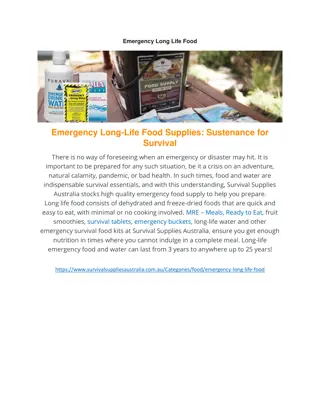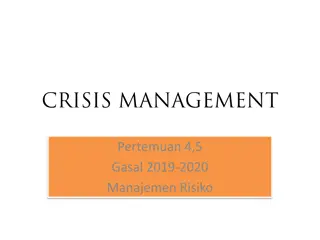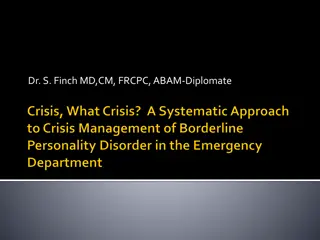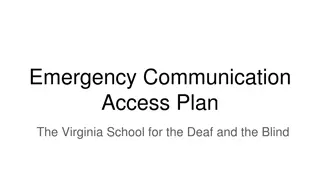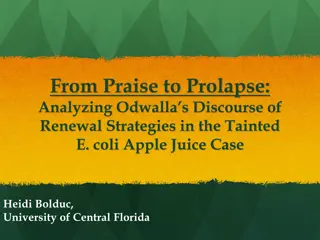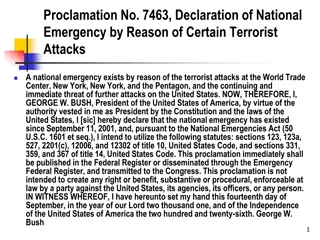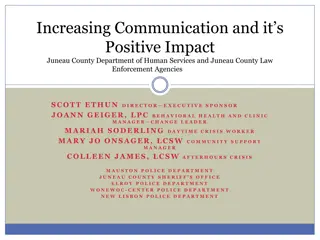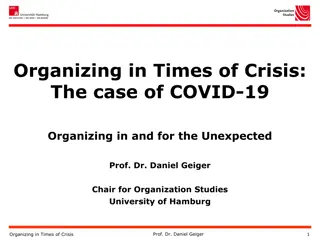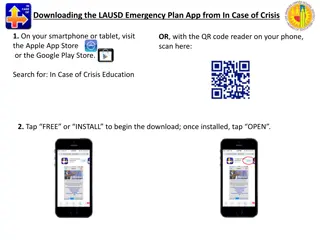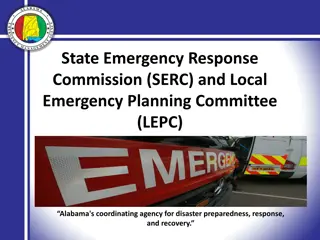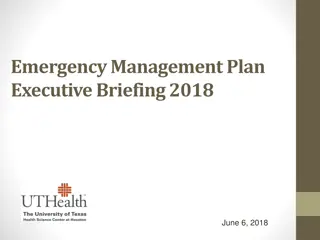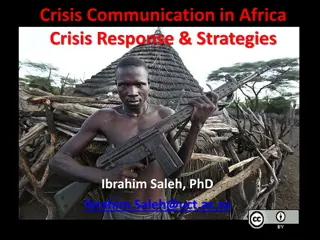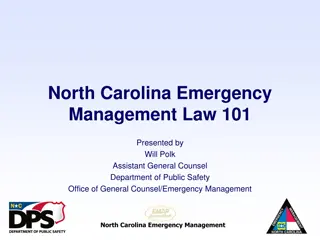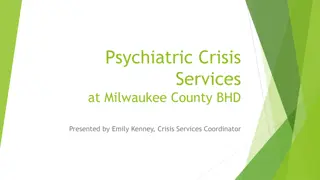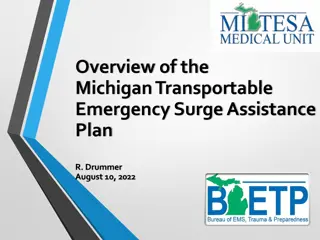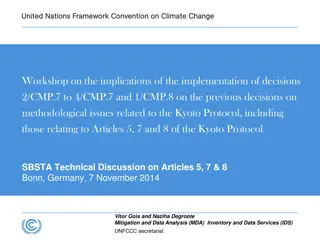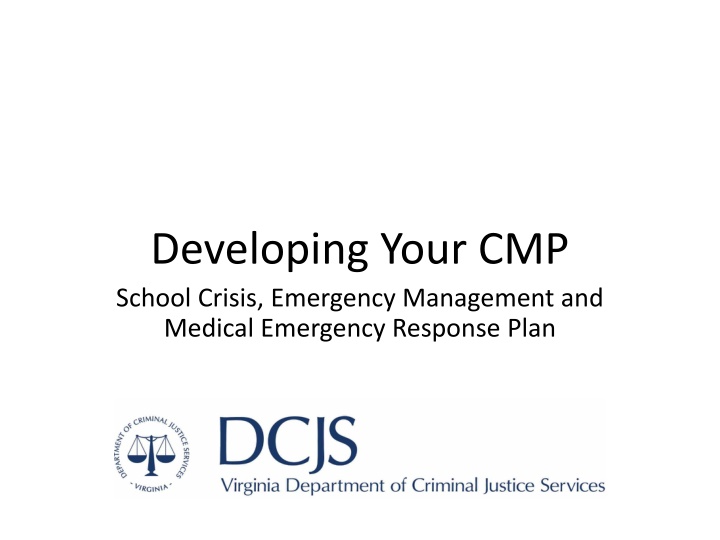
Developing Your CMP School Crisis Emergency Management Plan
This comprehensive plan addresses important considerations, incident command system planning, overlap of roles in emergencies, and objectives for operations, planning/logistics, communications teams, and building staff roles.
Download Presentation

Please find below an Image/Link to download the presentation.
The content on the website is provided AS IS for your information and personal use only. It may not be sold, licensed, or shared on other websites without obtaining consent from the author. If you encounter any issues during the download, it is possible that the publisher has removed the file from their server.
You are allowed to download the files provided on this website for personal or commercial use, subject to the condition that they are used lawfully. All files are the property of their respective owners.
The content on the website is provided AS IS for your information and personal use only. It may not be sold, licensed, or shared on other websites without obtaining consent from the author.
E N D
Presentation Transcript
Developing Your CMP School Crisis, Emergency Management and Medical Emergency Response Plan
Unit 2: DURING Important Considerations During a Crisis
Module 3 Incident Command System Planning
ICS for Educators Overlap of Roles and Responsibilities in an Emergency
ICS Teams Incident Commander Manage the incident Do Stuff Operations Plan Stuff Planning Get Stuff Logistics Pay for Stuff Finance
Operations Team Objectives: Anything that needs Doing Assist with facility needs at I-Site Assist R-Site Team with setup
Planning / Logistics Team Objectives: Anything that needs Getting Ensure staffing needs are met at all sites Ensure resource requests are filled at all sites
Communications Team Objectives: Communicate with parents regarding reunification Release information as appropriate Manage media Provide information for public release
Building Staff Roles Before Responders Arrive Initiate protective actions Prepare for transportation (if needed) Student / Staff / Visitor Accountability
Building ICS Chart Mimic normal role Can expand and contract as needed S Sc ch ho ool ol I In nc ci id den (Principal or Designee) ent t C Co om mm ma and nder er O Op pe er ra at ti ions (Assistant Principal) ons L Lo og gi ist sti ics cs F Fi in na ance (Administrative Assistant or Bookeeper) nce / / D Do oc cu um me ent nta at ti ion on (Asst Principal or Staff Team Lead) M Me ed di ica cal l (School Nurse) F Fa ac ci il li it ti ie es s C Co oo or rdi dina (Custodial Lead) nat to or r S St tu ud de ent nt & & S St ta af ff f C Co om mm m (Librarian or Staff Team Lead) S Su up pp pl li ie es s & & E Eq qu ui ip pm me ent nt (Office Staff) S St tu ud de ent nt C Ca ar re e & & R Re eco (Counselor) cove ver ry y T Tr ra ansp (Music / Art / PE Teacher) nspor ort ta at ti ion on S St tu ud de ent nt S Su up pe er rvi viso sor rs s (Teachers) F Fo oo od d & & W (Cafeteria Staff) Wa at te er r S St tu ud de ent nt / / P Pa ar re ent nt R Re eu uni nion (Registrar) on A Ad dd di it ti iona onal l P Po os si it ti ion (as needed) on P Pu ub bl li ic c S Sa af fe et ty y L Li ia ai iso son n (SSO, SRO, Office Staff) A Ad dd di it ti iona onal l P Po os si it ti ion (as needed) on
Unified Command Shift from building-lead response when first responders arrive School staff still maintain responsibility for staff and students Provide support to responding agencies
Partnerships with Responding Agencies Point person Non-emergency contact information Facility access (inside and outside)
Continuity of Operations Planning Continue to perform essential functions Restore functions and services as soon as possible Can exist at both school and division level Align with county, city, or local COOP
Emergency Delegation of Authority Chain of succession Different types of emergencies Who stays behind during reunification Reporting required information
Module 4 Emergency Response Protocols
STANDARD RESPONSE PROTOCOL (SRP) LOCKDOWN SHELTER SECURE EVACUATE HOLD
Preparing for SECURE Used when there is an imminent danger or threat outside the building Preparation Know the closest entrance from any outdoor areas you use often Assign exterior doors Print and post signs for easy access Staff and student accountability process
Preparing for LOCKDOWN Used when an imminent danger or threat is inside the building Preparation Check line of site in classroom Consider classroom setup Identify and plan for challenging areas List of key holders for building access Self-evacuation locations
Preparing for EVACUATE Used when it is safer to be outside than inside Preparation Classroom specific evacuation maps Common area evacuation routes Gathering locations Teacher Buddy System
Preparing for SHELTER Used when bad weather is anticipated or hazardous material has been released near the school Preparation Designate Shelter areas for weather Designate Shelter areas for HazMat Provide materials to seal off air flow Assign staff member(s) to shut off HVAC
Preparing for HOLD Used whenever the hallways need to be kept clear What to do Keep students in area Where possible, doors should be closed Communicate status to Admin Activities can continue in the designated area Remain in area until the Hold is lifted
Planning for Response Actions Roles and Responsibilities Charts Accountability Students Staff Visitors Staff Buddy System
Evacuation Routes Primary and Secondary Routes Posted in all common areas Room specific Consistency in mapping
Entry Points Any door that has exterior access Numbered clockwise from main entry Assigned for checking during Secure
Shelter Designated areas for weather Designated areas for HazMat May or may not be same areas Marked on common area and classroom maps
Site Mapping CRG overlay Water main HVAC Other utilities Traffic flow
Module 5 Threat and Hazard Specific Response
Act of Terrorism Terrorism is the unlawful use of force or violence against persons or property to intimidate or coerce a government, the civilian population, or any segment thereof, in furtherance of political or social objectives. Within United States Within State / Locally Use SECURE
Active Attack If a person displays a weapon, begins threatening students or staff with the weapon, or attempting to harm others with the weapon Move away from the area Do not allow suspected individual to carry belongings Use LOCKDOWN if weapon is verified Use HOLD if weapon is reported while conducting search
Flood Consider variety of sources that can cause flooding: heavy rains, dam failure, tropical storms, hurricanes, broken pipes Evaluate schools for probability Plan for potential relocation Use EVACUATE for interior flooding
Utility Failure Important to have all utility providers and point of contact within the company on file. Principal determines needed protective actions Contact Utility provider Contact Division Maintenance department Use EVACUATE for indoor gas leak or danger of fire during power failure
Severe Lightning In the event of a lightning threat, move all students and staff from outside, auxiliary and portable buildings to the main building. Staff training: CPR, First Aid, AED All outdoor movement/activities suspended Use SHELTER
Tornado Tornadoes are a violently rotating column of air, in contact with the ground, visible as a funnel cloud. Thunder, lightning, heavy rain, hail, and strong winds often precede a tornado. Storm WATCH vs WARNING Information sources All outdoor movement/activities suspended Use SHELTER for initial response Prepare for additional actions based on damage
Bomb Threat/Suspicious Package All bomb threats must be taken seriously until they can be assessed. The principal/CMT is primarily responsible for enacting any protective actions. DO NOT USE TWO-WAY RADIOS OR CELL PHONES Document threat on report form List of suspicious package characteristics Use HOLD until credibility is determined Use EVACUATE if indicated
Medical Emergencies Vary greatly in nature, scope, and needed response Never leave injured person alone or unattended Notify 911 when in doubt of severity Do not move injured person unless threat to safety Use HOLD to allow emergency services access
Missing/Abducted Students A student is considered missing any time they are unaccounted for at school, on school property, at a school activity, or while travelling to and from school. Define Abduction / Kidnapping From school property or activity Coordinating search Students with disabilities Use HOLD while conducting search
Trespasser/Unauthorized Person An unauthorized person who enters school property and does not report to the office to follow visitor check-in processes is considered an intruder or trespasser. Verify need to be on site Follow check-in process Encourage students and staff to report suspicious persons Use HOLD if needed to investigate situation Use SECURE as needed
Bus/Vehicle Crash When possible, the principal or designee should respond to the scene of the crash. If it is not feasible, they should maintain constant communication with staff on-site. Communications Department Transportation Department Transport to Hospital
Death/Serious Injury Response should be time-limited, problem-focused interventions to determine and disseminate accurate information, restore equilibrium, and support appropriate responses. Variations in Student or Staff-related incident Attempted / Completed Suicide Planning for memorials/anniversaries
Module 6 Crisis Response Operations
Communications Internal Notification of Emergency School / Division Staff Parents Pre-written templates External Notification Responders Utilities Service Providers
Methods of Communication Notification system School website Social media pages Paper copy of statements Local news sources
Key Sites Emergency Operations Center Off-site Reunification On-site Reunification
Staging Areas Transportation Supplies Media

